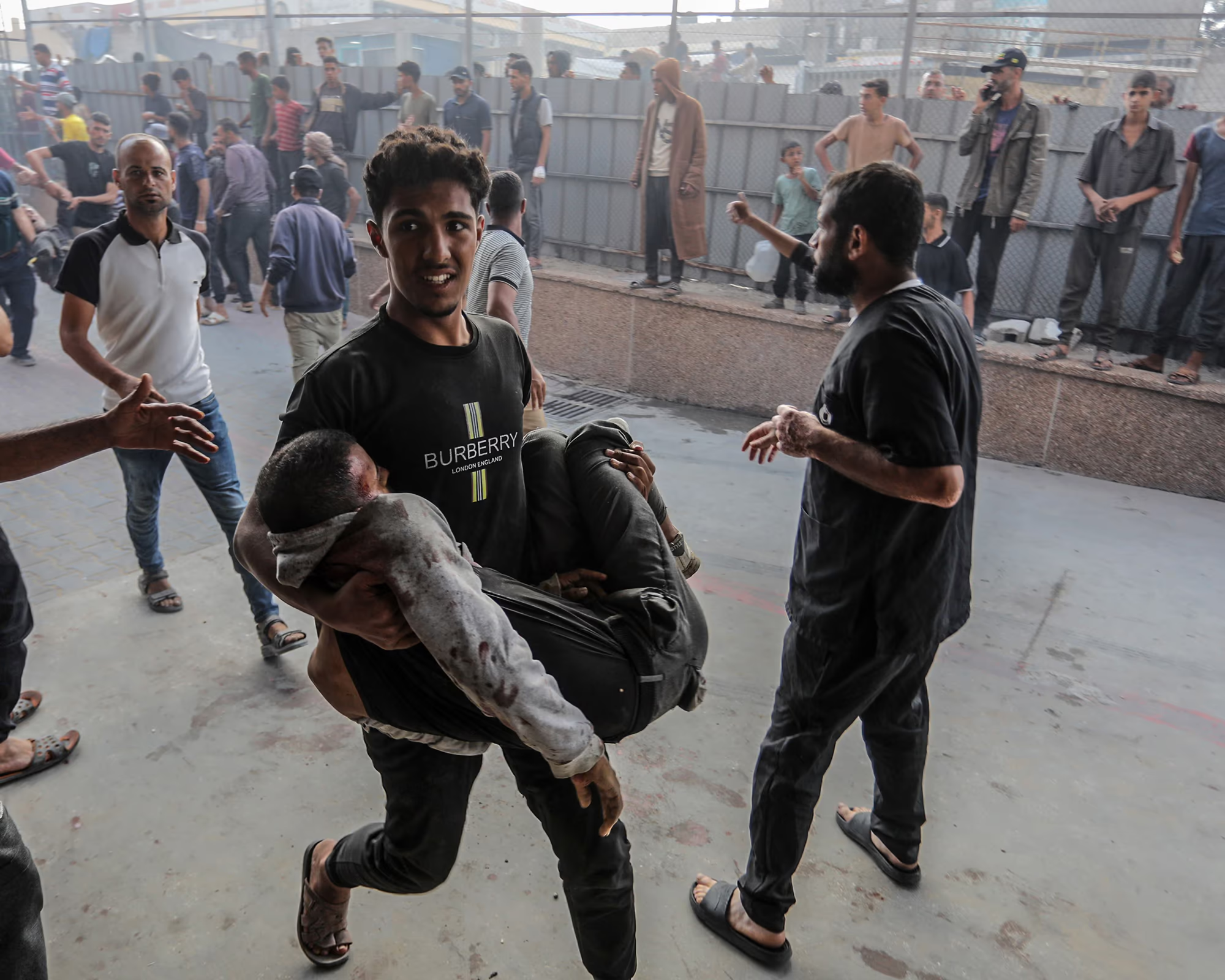On Tuesday, according to the Palestinian Ministry of Health, civilians in Gaza were once again killed while trying to access humanitarian aid. At least 36 people were killed, and another 207 wounded in shootings near distribution points.
Experts and humanitarian organizations warn that 20 months of Israeli blockade and military operations have pushed Gaza to the brink of famine. Since the beginning of this year, in areas where distribution centers of the Gaza Humanitarian Foundation operate—with U.S. and Israeli backing but closed to independent media—at least 163 people have been killed and nearly 1,500 injured.
The Israeli military acknowledges opening warning fire on individuals they deem to be approaching military positions “suspiciously.” The foundation itself maintains that no violence occurs inside the distribution points, though it has suspended operations in the past while consulting with the military on security protocols.
On Tuesday, Israeli Prime Minister Benjamin Netanyahu announced “significant progress” in ceasefire negotiations, which could also result in the release of some of the 55 hostages still held in Gaza. However, he added that “any hopes remain premature.” Foreign Minister Gideon Sa’ar confirmed that talks are moving forward.
On Tuesday evening, Netanyahu held a meeting with the negotiating team and the defense minister to discuss next steps.
In the Rafah area of southern Gaza, at least eight people trying to receive humanitarian aid were killed, according to Nasser Hospital. In the north of the enclave, in central Gaza, two men and a child were killed and another 130 people wounded, said Nader Gharghoun, a spokesperson for al-Awda Hospital. Most of the injuries were gunshot wounds.
Witnesses told Associated Press that Israeli forces opened fire around 2 a.m., several hundred meters from a distribution point. Crowds of Palestinians hoping to obtain food often gather long before dawn in an effort to avoid stampedes.
The Israeli military confirmed that it had fired warning shots at "suspicious individuals" who approached military positions before the aid site opened.
Mohammed Abu Hussein, a resident of the Bureij camp, said people were fired on by drones and tanks and that he saw five people wounded. Another witness, Abed Haniyeh, claimed the shooting was "indiscriminate" as thousands tried to reach food.
“What’s happening every day is humiliation,” he said. “People are being killed simply for trying to feed their children.”
Also on Tuesday, three Palestinian medics were killed in Gaza, according to the Health Ministry. They were working with emergency services and had arrived at a house on Yaffa Street in response to an Israeli strike when the building was hit again. The Israeli military did not comment on the specific incident but stated that in the past 24 hours it had struck dozens of Hamas military infrastructure sites, including rocket launchers.
Israel and the United States insist they have created a new aid distribution system designed to prevent Hamas militants from seizing supplies. However, the UN, which operates its own aid delivery infrastructure across Gaza, says it sees no evidence of systematic diversion of humanitarian goods.
UN agencies and major humanitarian organizations have refused to cooperate with the new system, saying it violates humanitarian principles: the Israeli side determines who receives aid and where, while Palestinians are forced to leave their homes and travel to just three functioning centers.
Two of those centers are located in Rafah—a city now nearly deserted and transformed into a military zone. Around all three sites, the Israeli army maintains external perimeters, requiring Palestinians to pass in close proximity to military forces.
Netanyahu has previously stated his intention to create a “sterile zone” in Rafah, free of Hamas, and to relocate the entire population of the Gaza Strip there. He has also spoken of a possible “voluntary emigration” of a significant portion of Gaza’s residents—plans that have been rejected by both Palestinians and the majority of the international community as an attempt at forcible displacement.
The war began on October 7, 2023, when Hamas militants attacked southern Israel, killing around 1,200 people—mostly civilians—and taking 251 hostages. According to Israeli estimates, 55 hostages remain in Gaza, fewer than half of whom are believed to be alive.
Since then, nearly 55,000 Palestinians have been killed in the Israeli military campaign, according to Gaza’s Health Ministry. The majority are women and children. The ministry does not distinguish between civilian and militant casualties. Israel claims to have killed over 20,000 militants but has not provided evidence.
Might Over Right

At Least 51 Killed in Khan Younis
Israeli Forces Once Again Open Fire Near Humanitarian Aid Distribution Point

Israel Consolidates Control Over the West Bank Through Administrative, Demographic, and Military Measures
De Facto Annexation Is Becoming Official Policy

Israeli Strike on Gaza School Kills 33—Army Says Militants Were Hiding in the Building

Israel Launches Airstrike on Jabalia
At Least 48 Dead, Including 22 Children

Israel Keeps Gaza Under Total Blockade, Cutting Two Million People Off From Food, Water, and Medicine
This Is Not a Humanitarian Crisis—It’s a Deliberate Siege

Blockade and Economic Devastation Leave Gaza Without Food
Families Survive on Canned Goods and Aid

